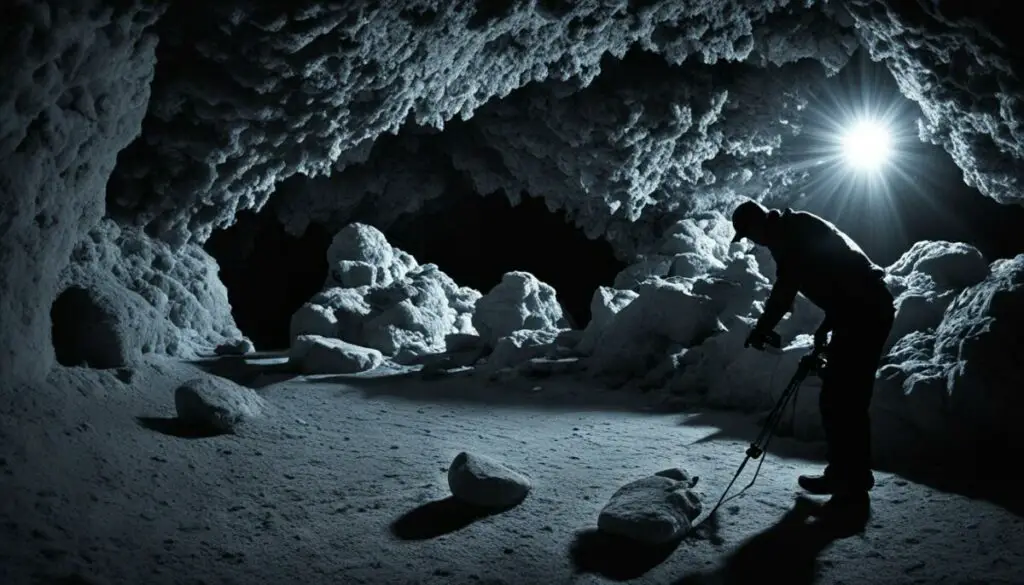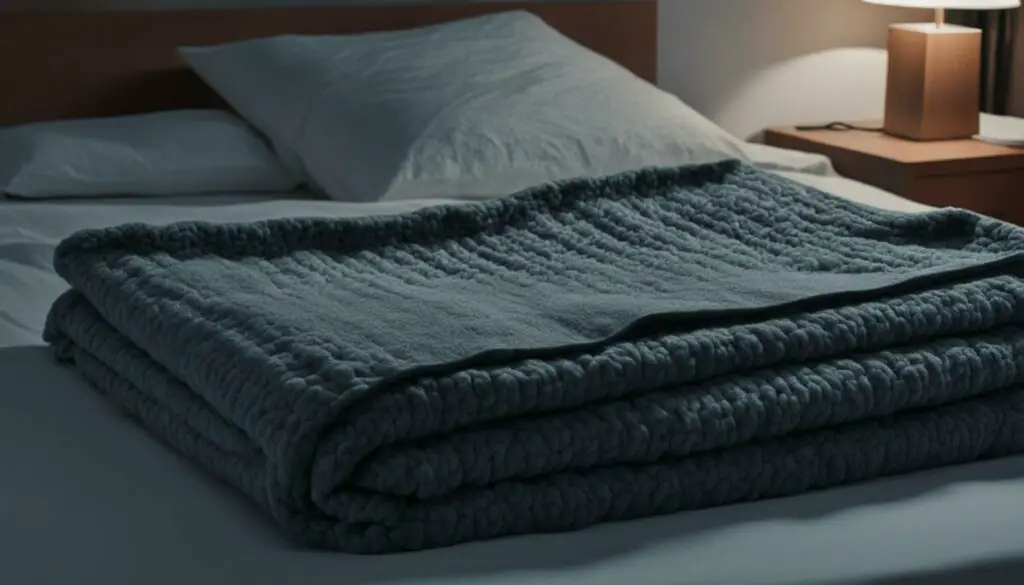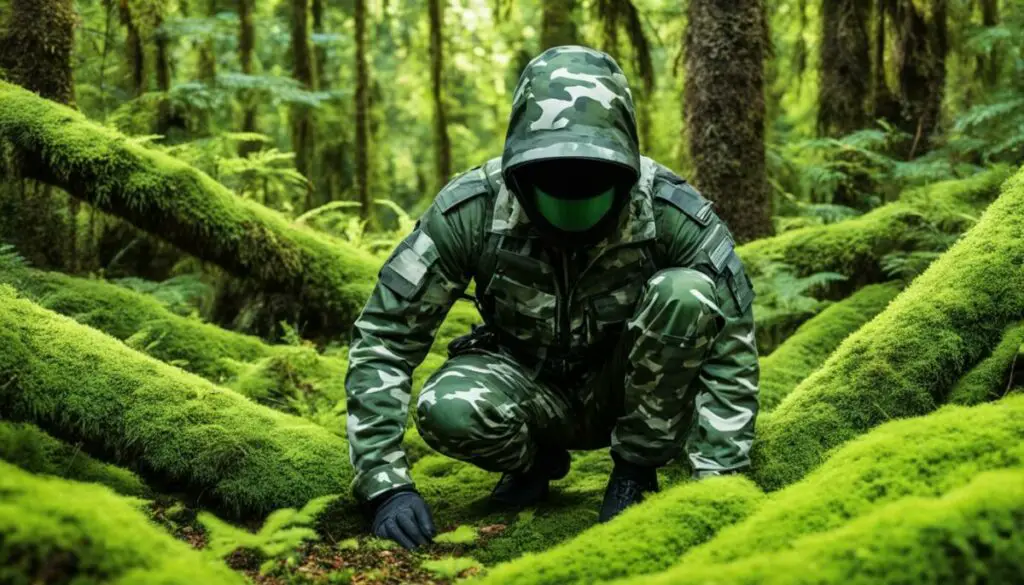Last Updated on 4 months by Francis
Infrared (IR) technology and thermal imaging have revolutionized many industries, from surveillance to medical diagnostics. The ability to detect heat signatures and capture images in low-light conditions has made thermal imaging a powerful tool. But can an infrared light be defeated? Is it possible to nullify or bypass its detection capabilities? In this article, we will explore strategies for countering infrared light, outsmarting thermal imaging devices, and maintaining privacy and security.
Contents
Key Takeaways:
- Understanding the vulnerabilities of infrared sensors is crucial in developing effective countermeasures.
- Strategies such as using glass as a barrier, utilizing thermal blankets, choosing the right background, and creating distractions can help defeat infrared light.
- Infrared sensors have limitations, including difficulty in detecting moving objects and susceptibility to electromagnetic interference.
- By blending in with the background and utilizing movement, it is possible to confuse and evade infrared sensors.
- While it may seem challenging, employing these techniques can help individuals maintain privacy and security in the face of infrared technology.
Understanding Infrared Technology and How It Works

Infrared technology, also known as thermal imaging, is a remarkable tool that allows us to visualize the invisible. It harnesses the power of infrared radiation, which is a form of electromagnetic radiation with longer wavelengths than visible light. Unlike visible light, infrared radiation is emitted by all objects and is unaffected by darkness or bad weather conditions. This makes thermal imaging an invaluable asset in various fields, including security, medical diagnostics, and scientific research.
So, how does infrared technology work? When an object emits infrared radiation, it carries valuable information about its temperature. This radiation is detected by specialized lenses in infrared sensors, which focus the infrared energy onto pyroelectric detectors. These detectors convert the incoming radiation into an electrical signal, which is then amplified and processed by detection logic circuitry. The result is a visual representation of the object’s temperature, known as a heat signature.
Infrared technology excels at detecting and visualizing heat signatures. It can pinpoint the hotspots on an energy-efficient building, reveal hidden defects in electrical systems, and even identify the presence of living organisms in complete darkness. By understanding how this technology works, we can develop effective strategies to either utilize it to our advantage or find ways to defeat it.
One of the key components of infrared technology is thermal imaging, which is the process of capturing and displaying infrared radiation as a temperature map. This temperature map is often represented by a color palette, where different colors correspond to various temperatures. By analyzing these temperature patterns, experts can identify anomalies, locate potential hazards, or detect the presence of objects in low-light conditions.
Did you know? Infrared radiation is not visible to the human eye, but we can perceive it indirectly as heat. This is why we often associate infrared technology with thermal energy, as it allows us to “see” the heat emitted by objects.
The Power of Thermal Imaging: Applications and Advantages
The applications of thermal imaging are vast and powerful. Here are some notable examples:
- Search and rescue operations: Thermal imaging cameras can quickly locate individuals in emergency situations, even when they are obscured by smoke or darkness.
- Building inspections: By identifying thermal anomalies, such as heat loss or electrical hotspots, thermal imaging helps ensure the structural integrity and safety of buildings.
- Medical diagnostics: Infrared imaging is used in medical imaging techniques like thermography to detect abnormalities, monitor blood flow, and aid in early disease detection.
- Wildlife observation: Thermal imaging enables researchers to study the behavior and distribution of animals, including endangered species, without disturbing their natural habitats.
While thermal imaging has many advantages, it’s important to recognize its limitations as well. Factors such as distance, environmental conditions, and the emissivity of objects can affect the accuracy and reliability of temperature measurements. Additionally, objects with low temperature differences or reflective surfaces may be more challenging to detect accurately.
| Advantages of Infrared Technology | Limitations of Infrared Technology |
|---|---|
| Non-invasive and contactless temperature measurements | Reliance on temperature differences for accurate detection |
| Real-time monitoring and instant feedback | Challenges in detecting low temperature differences |
| Ability to operate in low-light and adverse weather conditions | Potential inaccuracies caused by reflective surfaces |
| Wide range of applications in various industries | Distance limitations and challenges in measuring moving objects |
Strategies for Defeating Infrared Light

Hiding from thermal imaging and countering thermal imagers requires strategic approaches that effectively block IR radiation and disrupt heat signatures. Whether you’re trying to maintain privacy or evade detection, the following strategies can help you defeat infrared light:
Hiding Behind Glass
One effective method is to use glass as a barrier, which acts as an obstacle for thermal imagers. When positioned between you and the thermal imager, glass blocks infrared radiation, making it difficult for the device to detect your heat signature. This strategy can be especially useful in situations where glass is readily available, such as windows or glass doors.
Blocking Infrared Radiation with Thermal Blankets
Another tactic is to use thermal blankets or space blankets made of Mylar foil. These blankets have the ability to trap or reflect the body heat, effectively blocking infrared radiation from thermal imagers. By wrapping yourself in a thermal blanket, you can significantly reduce your heat signature and minimize the chances of detection.
Blending In with the Background
Choosing the right background can also help hide from thermal imaging devices. By selecting a background that closely matches your body temperature, such as a brick wall on a sunny day, you can blend in and make it harder for thermal imagers to distinguish your heat signature. This strategy relies on utilizing the natural temperature variations of different materials and environments.
Reducing Heat Signatures with Warm Clothing
Wearing warm clothes can play a crucial role in decreasing heat signatures. Thick layers of clothing act as insulation, reducing the amount of heat emitted by your body. By wearing appropriate attire, you can significantly minimize your chances of being detected by thermal imagers.
Creating Distractions and Dispersing Heat Signature
Creating distractions can be an effective technique to confuse thermal imagers. By generating multiple heat sources or setting burning objects nearby, you disperse your heat signature, making it harder for the imager to pinpoint your exact location. This strategy can be particularly useful in situations where movement might not be feasible.
Movement to Confuse Infrared Sensors
Moving quickly or utilizing erratic movements can also confuse infrared sensors. By constantly changing your position or altering your speed, you make it challenging for thermal imagers to accurately track your heat signature. This strategy can be combined with other tactics to enhance your chances of successfully evading detection.
By employing these strategies, you can effectively counter thermal imagers and block IR radiation, giving you the advantage of hiding from infrared light. Each tactic aims to disrupt or confuse the heat signatures that thermal imagers detect, providing you with greater privacy and security.
The Vulnerabilities of Infrared Sensors

Although infrared sensors are highly effective in detecting heat signatures, they possess certain vulnerabilities that can be exploited. By understanding these weaknesses, one can develop effective countermeasures to defeat infrared sensors and overcome the limitations of IR technology.
Motion Detection Limitations
One key vulnerability of infrared sensors is their difficulty in detecting moving objects and slow intruder motion. The technology relies on temperature differences to identify objects, making it challenging to accurately detect and track targets that are in motion.
Fooled by Temperature Similarities
Infrared sensors can be tricked by intruders who have the same temperature as the background. Since the sensors rely on temperature variations to detect objects, individuals who match the surrounding temperature can go undetected by thermal imaging devices. This vulnerability allows for potential bypassing of infrared sensors by blending in with the environment.
Interference from Electromagnetic Fields
Another vulnerability of infrared sensors is their susceptibility to electromagnetic fields and shielding. These external factors can interfere with the sensors’ detection capabilities, leading to inaccurate readings or the inability to detect heat signatures effectively.
By recognizing these vulnerabilities and weaknesses, it becomes possible to develop strategies to overcome them and enhance privacy and security. The use of appropriate countermeasures can help individuals evade detection by thermal imaging devices, ultimately nullifying the limitations of IR technology.
| Vulnerabilities of Infrared Sensors | Countermeasures |
|---|---|
| Motion Detection Limitations | Utilize deliberate movement or slow motion to confuse sensors. Create distractions to divert attention from the moving object. |
| Fooled by Temperature Similarities | Wear clothing that matches the ambient temperature. Use thermal blankets or materials that camouflage body heat. |
| Interference from Electromagnetic Fields | Avoid areas with strong electromagnetic fields or use shielding materials to minimize interference. |
The Use of Glass as a Barrier for Blocking Infrared Light

One effective method for blocking infrared light is by using glass as a barrier. Despite its transparency, glass can obscure heat signatures as effectively as a high brick wall. By concealing behind glass, individuals can create a barrier that prevents thermal imagers from detecting their heat signatures.
Using glass as a barrier works because it acts as a thermal insulator, preventing the transfer of heat from the individual to the surrounding environment. This hinders the ability of thermal imagers to detect the heat signature, effectively hiding the individual from thermal imaging devices.
While glass is an effective option, it may not always be practical or readily available in certain situations. In such cases, alternative methods such as utilizing thermal blankets or choosing the right background can be considered.
Utilizing Thermal Blankets and Woolen Blankets to Block Infrared Radiation

One effective strategy for blocking infrared radiation and hiding from thermal imaging devices is to utilize thermal blankets. Thermal blankets, often made of Mylar foil, are also known as space blankets. These highly reflective blankets are designed to reflect or trap the body heat, making it challenging for thermal imagers to detect heat signatures.
By wrapping yourself or objects in thermal blankets, you can create a barrier that significantly reduces the heat emitted, making it difficult for infrared sensors to identify your presence. However, it is worth noting that the accumulation of heat inside the blanket over time may eventually become visible to infrared images.
In addition to thermal blankets, woolen blankets can also provide a temporary method to hide from thermal imagers. While not as efficient as space blankets, woolen blankets offer some level of protection by blocking the heat emitted by the body. These blankets have insulating properties that help to minimize the heat signature, further reducing the chances of detection by thermal imaging devices.
When utilizing thermal or woolen blankets, it is important to ensure proper coverage and insulation. Wrapping the blankets tightly around the body and minimizing exposed areas will enhance their effectiveness at blocking infrared radiation and hiding heat signatures.
Benefits of Utilizing Thermal and Woolen Blankets:
- Efficiently block infrared radiation
- Reflect or trap body heat, making heat signatures less detectable
- Provide a temporary method to hide from thermal imaging devices
- Easy to carry and deploy when needed
Overall, utilizing thermal blankets and woolen blankets can be a practical and effective way to block infrared radiation and hide from thermal imaging devices. When combined with other strategies, such as choosing the right background or creating distractions, individuals can significantly increase their chances of remaining undetected by thermal imagers.
Choosing the Right Background to Blend In with Temperature

Different materials radiate heat differently, and temperature contrasts can make things more obvious to thermal imagers. To increase your chances of hiding from thermal imaging devices, it is crucial to choose a background that closely matches your body temperature. By blending in with the environment, you can effectively mask your heat signature and become less noticeable.
For example, on sunny days, opting for backgrounds like brick walls or bare earth can help camouflage your heat signature. These materials tend to absorb and radiate heat, making it easier for you to blend in with the surrounding temperature. On the other hand, it is essential to avoid uniform backgrounds like empty parking lots or snow, as they can make you stand out and be easily detected by thermal imagers.
To further illustrate the importance of choosing the right background, refer to the table below:
| Background | Effectiveness |
|---|---|
| Brick Wall | Highly effective in blending with temperature due to its ability to absorb and radiate heat |
| Bare Earth | Provides good camouflage as it closely matches the temperature of the surroundings |
| Empty Parking Lot | Not recommended as it offers little variation in temperature and can easily expose your heat signature |
| Snow | Should be avoided as it contrasts sharply with body temperature, making you highly visible to thermal imagers |
By strategically selecting backgrounds that help you blend in with the temperature, you can effectively hide from thermal imaging devices and maintain your privacy and security.
Creating Distractions and Utilizing Movement to Confuse Infrared Sensors
Infrared sensors have difficulty detecting moving objects. By creating distractions or moving slowly, individuals can confuse the sensors and make it harder for them to accurately detect heat signatures. Sitting near air vents that pump out hot air or staying near water sources can also help mask body heat and lower the heat signature. Additionally, wearing warm pants and hats can help reduce the heat signature, and setting objects on fire can create multiple heat sources that can confuse thermal imagers.
Examples of Creating Distractions:
- Using smoke grenades or fog machines
- Deploying decoy heat sources or mannequins
- Using mirror reflections to bounce heat signatures
- Moving in a zigzag or unpredictable pattern
By employing these tactics, individuals can effectively create confusion and make it more challenging for thermal imagers to accurately detect their heat signatures.
Examples of Utilizing Movement:
- Crawling slowly to minimize the heat signature
- Jumping or leaping to disrupt the heat pattern
- Moving in and out of cover to avoid a constant heat source
- Using natural obstacles to break the heat signature
Maintaining continuous movement and utilizing techniques that break the predictable pattern can further outsmart the thermal imaging devices and increase the chances of remaining undetected.
| Creating Distractions | Utilizing Movement |
|---|---|
| Creates confusion for infrared sensors | Confuses the heat pattern detected by thermal imagers |
| Masks the actual heat signature | Disrupts the consistent and predictable heat source |
| Increases chances of remaining undetected | Outsmarts thermal imaging devices |
Conclusion
In conclusion, defeating infrared light and hiding from thermal imaging devices is indeed possible with the right techniques. By understanding the vulnerabilities of infrared sensors and employing strategic methods, individuals can effectively evade detection and maintain their privacy and security.
One of the key strategies is utilizing physical barriers such as glass, which can effectively block infrared radiation and obscure heat signatures. Additionally, thermal blankets or woolen blankets can be used to trap or reflect body heat, making it difficult for thermal imagers to detect. Choosing the right background that matches your body temperature and creating distractions through movement or multiple heat sources can also help confuse infrared sensors.
It is important to note that defeating infrared light requires a combination of these techniques and a thorough understanding of the limitations of thermal imaging devices. By applying these effective strategies, individuals can outsmart infrared technology and remain undetectable to thermal imagers.
FAQ
Can an infrared light be defeated?
Yes, there are strategies that can help counter and defeat infrared light.
How does infrared technology work?
Infrared technology, also known as thermal imaging, detects heat signatures using specialized sensors and lenses.
What are some strategies for defeating infrared light?
Strategies include using glass as a barrier, utilizing thermal blankets, choosing the right background, wearing warm clothes, creating distractions, and understanding infrared sensor vulnerabilities.
What are the vulnerabilities of infrared sensors?
Infrared sensors have difficulty detecting moving objects and can be fooled by the same temperature as the background.
How can glass be used to block infrared light?
Glass can effectively block infrared light and create a barrier that prevents thermal imagers from detecting heat signatures.
Can thermal blankets block infrared radiation?
Yes, thermal blankets made of Mylar foil or wool can effectively block infrared radiation and reduce heat signatures.
How can the right background help in defeating infrared light?
Choosing a background that closely matches body temperature can help blend in and make heat signatures less noticeable.
How can distractions and movement confuse infrared sensors?
Creating distractions or moving slowly can confuse infrared sensors and make it harder for them to accurately detect heat signatures.
What are some effective techniques to defeat infrared light?
Strategies such as using glass barriers, thermal blankets, choosing the right background, and creating distractions can help individuals avoid detection by infrared sensors.








